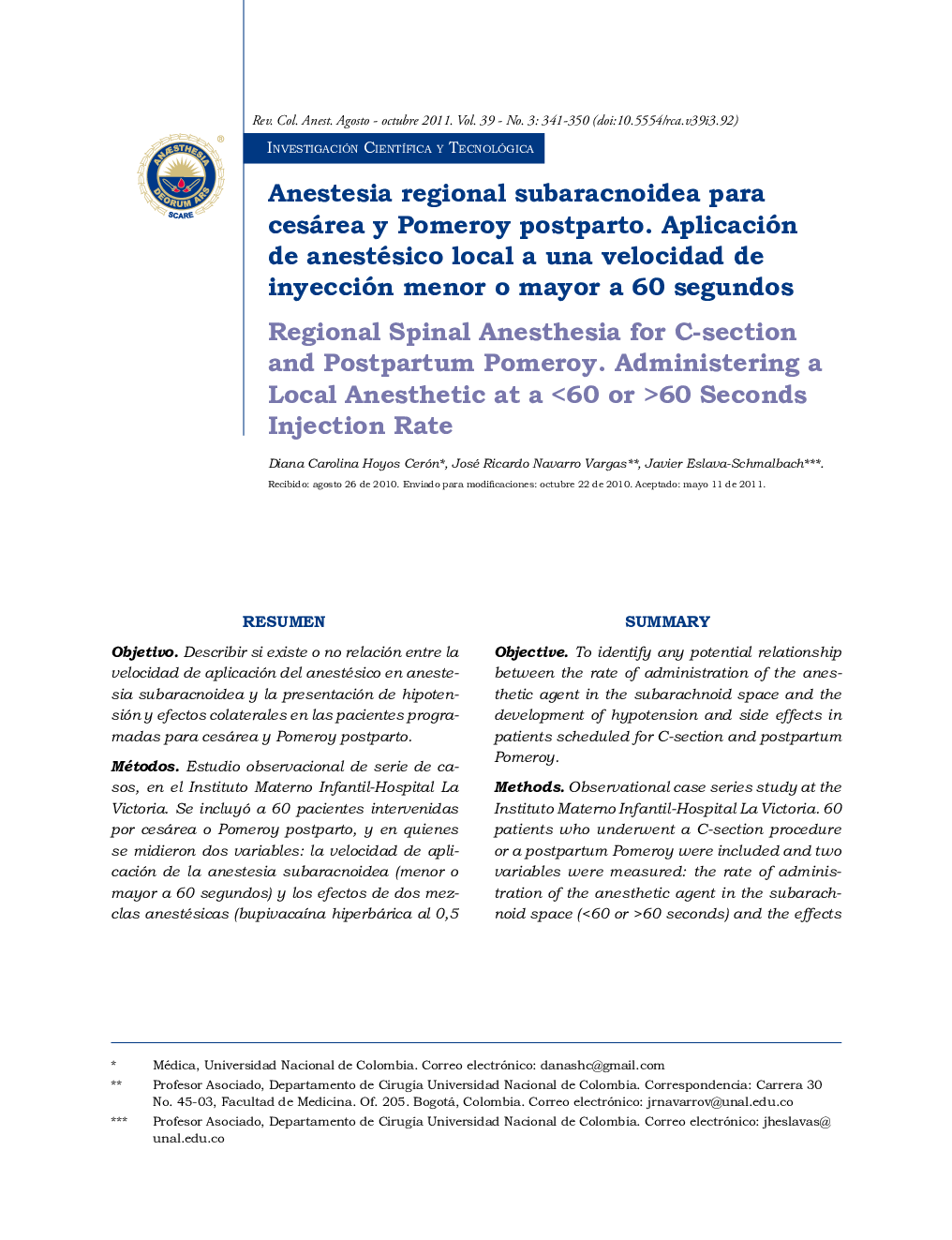| Article ID | Journal | Published Year | Pages | File Type |
|---|---|---|---|---|
| 2768037 | Revista Colombiana de Anestesiología | 2011 | 10 Pages |
RESUMENObjetivoDescribir si existe o no relación entre la velocidad de aplicación del anestésico en anestesia subaracnoidea y la presentación de hipotensión y efectos colaterales en las pacientes programadas para cesárea y Pomeroy postparto.MétodosEstudio observacional de serie de casos, en el Instituto Materno Infantil-Hospital La Victoria. Se incluyó a 60 pacientes intervenidas por cesárea o Pomeroy postparto, y en quienes se midieron dos variables: la velocidad de aplicación de la anestesia subaracnoidea (menor o mayor a 60 segundos) y los efectos de dos mezclas anestésicas (bupivacaína hiperbárica al 0,5 % 7,5 mg, más morfina 100 mcg, y bupivacaína hiperbárica al 0,5 % 12 mg, más fentanil 20 mcg). Se registraron las cifras de presión arterial media y los efectos colaterales al aplicar el anestésico, en los minutos 1, 5, 10 y 15, y al final de la cirugía.ResultadosLa evidencia obtenida sugiere que no hay diferencias entre los efectos hemodinámicos de las mezclas o entre las técnicas anestésicas, así como tampoco las hay en cuanto a la presentación de efectos secundarios.
SUMMARYObj'ectiveTo identify any potential relationship between the rate of administration of the anesthetic agent in the subarachnoid space and the development of hypotension and side effects in patients scheduled for C-section and postpartum Pomeroy.MethodsObservational case series study at the Instituto Materno Infantil-Hospital La Victoria. 60 patients who underwent a C-section procedure or a postpartum Pomeroy were included and two variables were measured: the rate of administration of the anesthetic agent in the subarachnoid space (< 60 or > 60 seconds) and the effects of two anesthetics combined (0.5 % hyperbaric bupivacaine 7.5 mg, plus morphine 100 mcg, and 0.5 % hyperbaric bupivacaine 12 mg, plus fentanyl 20 mcg). The mean blood pressure values were recorded, together with any side effects following the administration of the anesthetic agent at 1, 5, 10 and 15 minutes and at the end of surgery.ResultsThe evidence obtained suggests that there are no differences in the hemodynamic effects of the combination or the nesthetic technique used, nor with regards to the occurrence of side effects.
